The impact of technology on society and the environment
In this chapter, you will learn how plastic waste damages the environment. Then you will learn how this negative impact can be reduced.
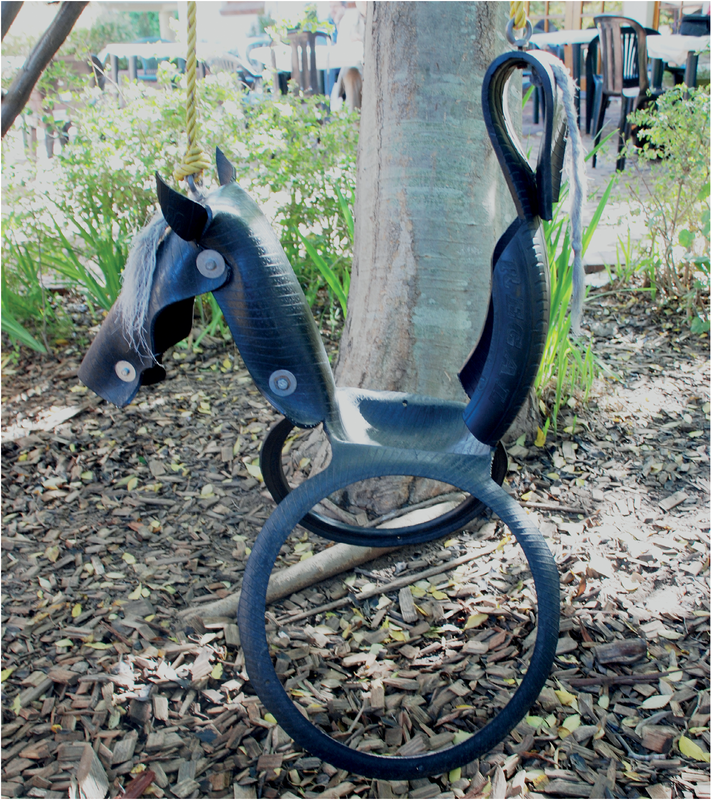
Many years ago, people could only use the materials that they found in the natural environment. This means all of the natural things that are around us. It includes air, water, soil, plants and animals. Some examples of natural materials are wood, leather, clay and grass.
Today, people use many new materials that are not found in the natural environment. These materials are made in factories. They are often made from oil or coal that are found under ground. This includes materials like plastic, certain paints, and certain fabrics used to make clothes. You may have heard of "polyester clothes", "PVA paint" and "neoprene rubber". These are called synthetic materials.
Synthetic materials have many advantages. They are often more durable, lighter and cheaper than natural materials. Something is durable if it lasts for a long time.
But synthetic materials also have disadvantages. When they are thrown away, the waste lasts a long time. Therefore, it is better to use synthetic materials over and over again. This is called reusing materials.
Because synthetic materials are cheap, people can afford to buy more things that they want. One of the easiest ways to reduce the disadvantages of synthetic materials is to buy fewer things. This is called reducing consumption. Before you buy something new, ask yourself if you really need it.
There is another disadvantage to synthetic materials that most people do not see. Harmful waste is often formed at the factories where the synthetic materials are made. This waste can end up in the air, the water and the soil. Modern factories are designed better than older factories so that they release less harmful waste into the environment.
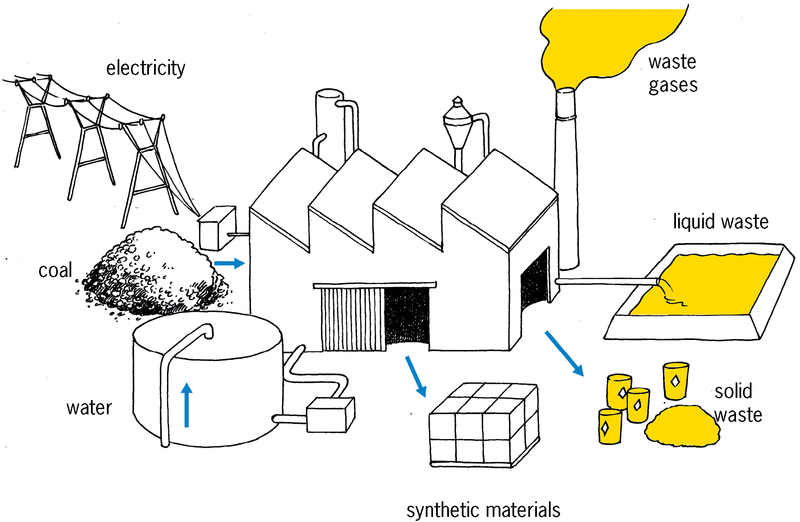
One good idea is to keep waste of synthetic materials separate from waste of natural materials. This is called waste separation.
Waste of natural materials is broken down in the natural environment to form harmless substances like compost. Some natural materials break up into harmless substances simply when they lie in the sun or in water for some time.
A material is called biodegradable if natural processes can break the material into small harmless pieces.
Materials that cannot break down naturally into harmless substances are called non-biodegradable materials.
Many people throw all their fruit and vegetable peels on a compost heap. They also throw dead leaves, small tree branches and cut grass on it.
Over a few months, the waste on the compost heap changes into small dark pieces that feel like soft soil. This is called compost or humus. Compost is a valuable material, because plants grow better in soil that contains a lot of compost.
A compost heap should be kept wet, warm and filled with air. You can do this by covering the heap with a plastic sheet, and mixing the compost once a week.
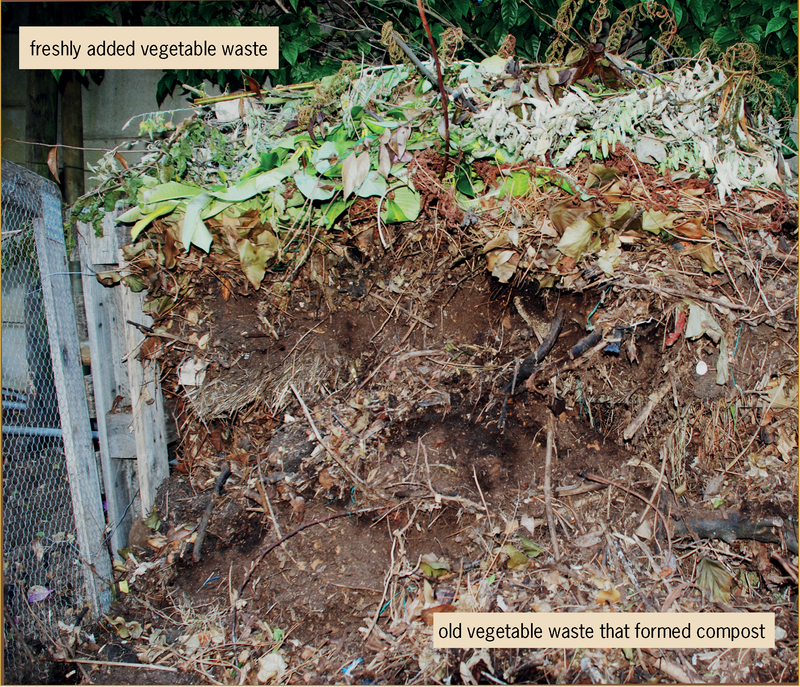
What are things made of?
Look around you at the following objects in your classroom. For each object, do the following:
-
Write down what you think this type of object was made of hundreds of years ago, before there were synthetic materials.
-
Write down what this object is made of today.
|
Object |
What was it made of hundreds of years ago? |
What is it made of today? |
|
Shirt |
Hint: Look at the label inside your school shirt. |
|
|
Jersey |
Hint: Look at the label inside your school jersey. |
|
|
Pen |
||
|
Something to write on |
Hint: What did the Egyptians write on? What did the Khoisan draw on? |
|
|
Pencil case |
||
|
Paint |
||
|
Roof |
||
|
School bag |
After you have completed the table, discuss your answers with the learner sitting next to you.
Homework for the next lesson
You need to do these exercises to be able to answer the questions in the next lesson.
-
Look at the contents of dustbins and garbage bags. Make a list of all the solid materials in the waste.
-
Stand in street near your home. Look around you, without walking to another position. Count how many plastic bags you can see. Go to a different street and do the same again. Then complete the table below.
Number of plastic bags you can see
Street A
Street B
Look at plastic bags lying around outside that still look new.
Also look at plastic bags lying around outside that look old.
Why do some plastic bags look new and others old? What made the old ones look that way?
-
Look at new and old pieces of materials made from plants that are lying around, such as wood, cut grass, paper and cardboard. How do the newer pieces of this waste differ from those that have been lying around for a long time?
How do you throw your waste away?
It is good for the environment if you put different kinds of waste in different garbage bags or boxes. This is called waste separation. For example, if you put all your glass waste into a box, then that glass can be taken by a waste collector to a factory that makes new glass bottles out of old glass. This is much better than if the old glass lies on a rubbish heap. We say that glass can be recycled. You will learn more about recycling next week.
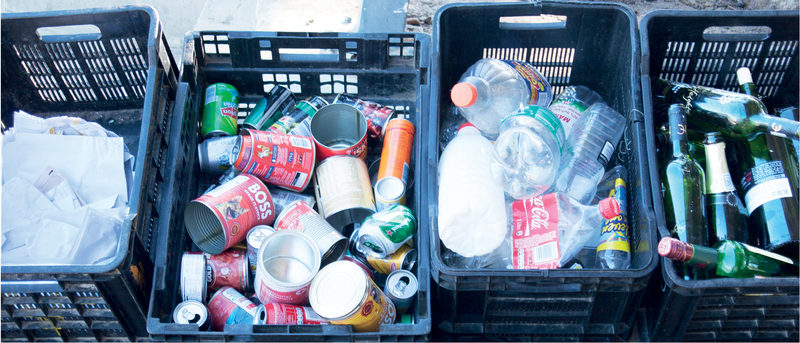
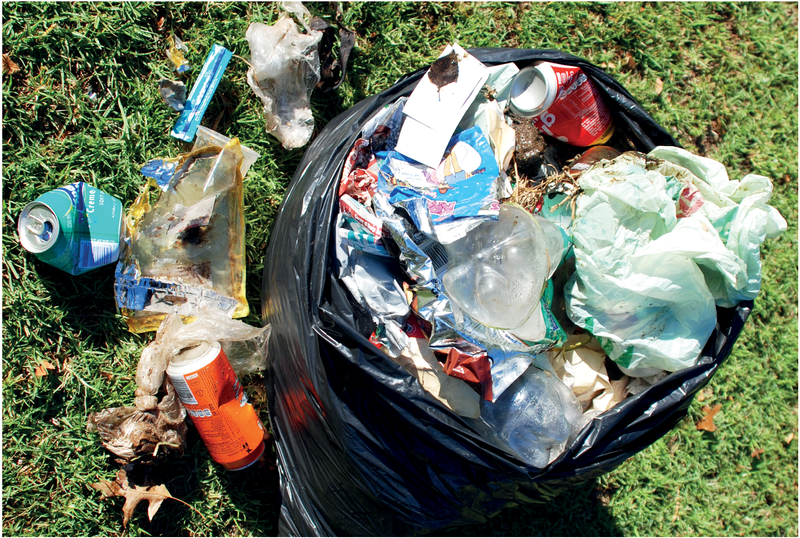
What happens to things that are thrown away?
Discuss in groups of three or four
To answer these questions, think back to the homework exercises you did.
-
What are the differences between waste materials that have been lying outside for a long time and those that have been there for a short time?
-
Which types of materials changed a lot with time? And which types of materials did not?
-
Do some materials change more with time than others?
-
-
What do you think will happen to plastic bags that lie in the environment for more than 10 years, or 100 years, or 1 000 years?
-
Do the plastic bags that are thrown away as waste just get more and more? Or do they biodegrade? Or do they go somewhere else?
-
Different properties of different materials
Siphosethu uses a paper bag to carry her shopping.
Brandon uses a plastic bag.
Thabang uses a leather bag.
They all reuse their bags, but all of their bags break after some time.
Answer the following questions for each type of bag on your own.
-
What will happen to the bag when it gets wet?
Paper bag
Plastic bag
Leather bag
-
Do you need to care for the bag in some way so that it will last longer?
Paper bag
Plastic bag
Leather bag
-
Can the bag be fixed when it breaks? If yes, then how?
Paper bag
Plastic bag
Leather bag
What will happen to the bag if it is thrown away with other waste like rotting food? Where will the bag end up? What will happen to it there?
Paper bag
Plastic bag
Leather bag
Homework
Think about a place where garbage is burned. You may have seen places like this.
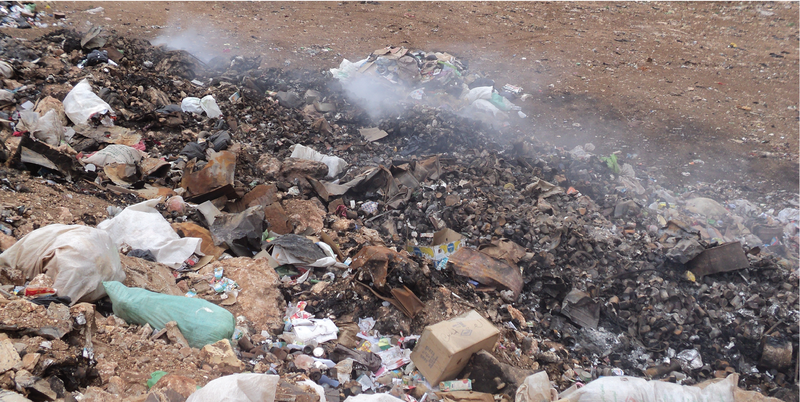
-
What does the ground look like?
-
What does the air look like?
-
What does it smell like?
How can you stop people from throwing plastic bags away?
Case study: the negative impact of plastic shopping bags on people and the environment
During the past two weeks you have read and experienced a lot about the impact of plastic materials on people and the environment. Think back about this when you answer the following questions.
-
What can happen if an animal eats a plastic bag?
-
What happens to people and animals who breathe in the smoke and gases that comes from burning plastic?
-
Where do the smoke and gases go after the fire has burnt?
-
What stays behind on the ground after the plastic was burnt?
-
-
What does it look like when there are lots of plastic bags lying around your house or school, or in the street, or in the veld?
-
Look at the photo below:
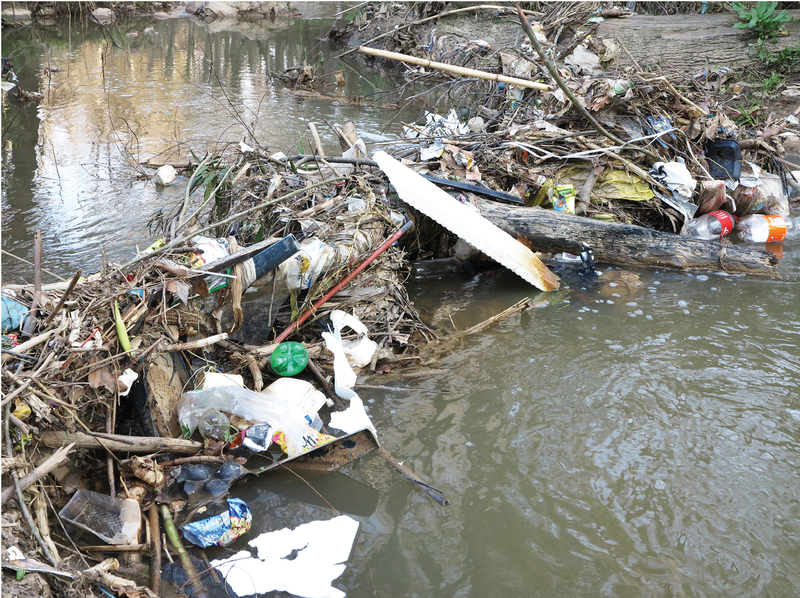
Figure 7 What can happen when plastic bags end up in a river or stream?
-
What happens to plastic if it lies in water for a long time? Does it change?
Report: reducing the negative impact of plastic bags
Until 2003, South African shops gave customers free plastic bags to carry their shopping. These bags were very thin, and broke easily. This meant that the bags were thrown away after they were used.
Our government wanted to reduce plastic waste. In 2003, it banned supermarkets from giving customers shopping bags for free, and banned the use of very thin plastic shopping bags. These bags are illegal.
Since then, supermarkets ask customers to pay for thicker, stronger shopping bags that can be used over and over again. The bags still look very thin, but they are less thin than the shopping bags used before 2003. Customers can choose not to buy new bags, and rather take old shopping bags with them to the shops.
The new, thicker plastic shopping bags are also easier to recycle by recycling factories. But this only helps if people separate their waste so that the plastic bags can be sent to a recycling factory.
Think back about what you saw when you were looking at the contents of dustbins and garbage bags, and at plastic bags lying around outside. Write a half-page report about this to answer these four questions:
-
Do you think that making people pay for thicker, reusable shopping bags helps to reduce the amount of plastic shopping bags that people throw away?
-
Are some shops still giving away thin plastic shopping bags for free?
-
What percentage of people do you think put their plastic waste separate, and not with their other waste?
-
Are there other things people can do so that less plastic bags are thrown away?
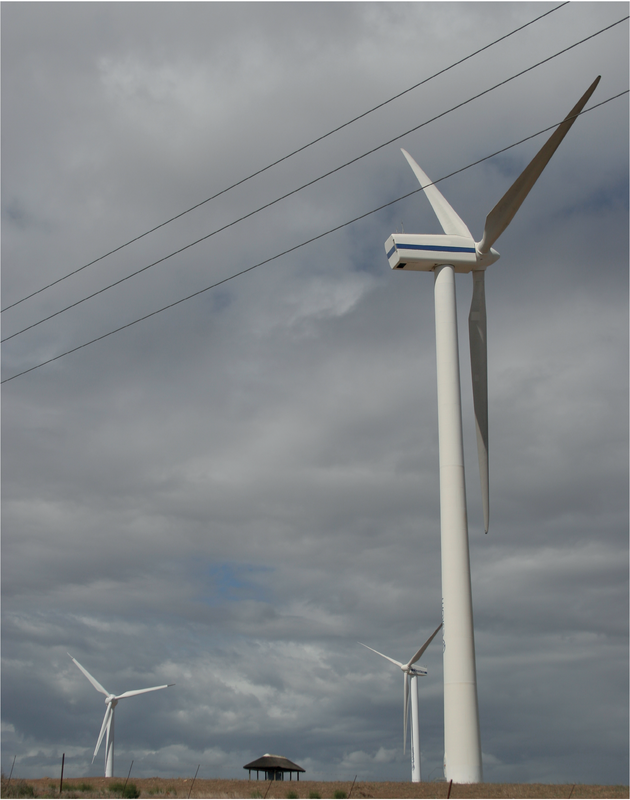
Next week
Next week you will be working with paper and cardboard in class. Instead of buying new paper and cardboard, you will reuse old paper and cardboard. Gather some paper and cardboard waste over the weekend, and bring it with you to school at the start of next week. Gather things like cardboard packaging for food.



